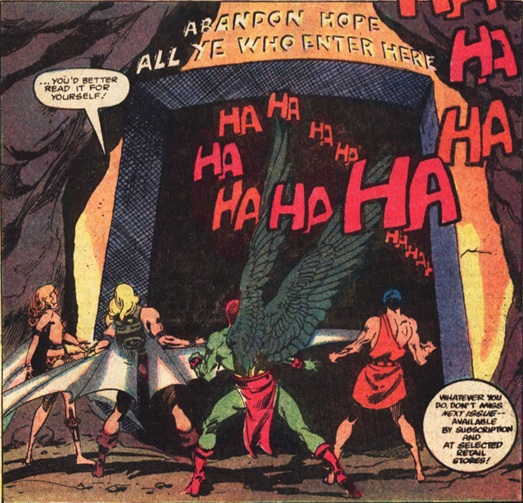2018 New Testament Apocrypha Course: Week 7
Our second week looking at resurrection texts focused on apocalypses. We began with a short reading from the beginning of the Apocalypse of Paul with its claim to have been found, along with a dusty pair of shoes, in a chest in the home of Paul in Tarsus. We have seen such claims before in the Coptic Pseudo-apostolic memoirs. It’s a curious feature: for all orthodox Christianity’s bluster about apocryphal texts being fakes and forgeries, many orthodox writers had little hesitation in creating some of their own apocryphal texts to serve their own purposes. The look at this introduction served as a lead-in to the conventions of apocalyptic literature, including, as in Apoc. Paul, the motif of hiding a book away and rediscovering it centuries later when all of its prophecies appear to have come to pass.

After a brief discussion of the canonical Book of Revelation, we spent a short time looking at several apocryphal apocalypses of John. The first of these, usually called 1 Apocryphal Apocalypse of John, continues the story in Revelation with John asking additional questions of Jesus, this time about the form that the dead will take when they rise from the grave: as thirty-year-olds and bodiless, without any distinguishing features (shape, size, colour). Another text, the Questions of James to John, features James asking John questions about redemption. Simon Peter and Mary Magdalene are presented as examples of people who had committed grave sins yet they repented and achieved salvation. Mary, it is said, “sinned with 1703 men, and did not know whether they were strangers or family.” We finished up the first half of the night with a quick overview of three other Johannine apocalypses: 2 Apocryphal Apocalypse of John (aka Apocalypse of John Chrysostom, misattributed to Chrysostom in the title), the unpublished 3 Apocryphal Apocalypse of John (extant in two manuscripts with great variations in content), and the Coptic Mysteries of John. All five of theses texts will be included in the second volume of New Testament Apocrypha: More Noncanonical Scriptures.
After the break we turned to the main text of the night, the Apocalypse of Peter. I’ve had a soft spot for this text ever since I chose it as the subject of a major paper for my Masters degree. My interest in the text was in its depiction of children. In Apoc. Pet.’s gruesome tour of hell, women who have procured abortions are punished with lightning bolts flashing out at them from would-be children (8), and beasts devour the flesh of men and women guilty of infanticide (8). Apoc. Pet. features a number of other punishments for practices many of us today no longer consider sinful, including men “who defiled themselves with one another in the fashion of women” (10). I asked the class what shape Christianity would have taken if this text had been chosen for inclusion in the canon (and it nearly was!). Certainly those who today fight against abortion rights and same-sex marriage would have clear biblical basis for their positions.
We watched a short discussion of Apoc. Pet. from the Banned from the Bible documentary. In it John Dominic Crossan suggests that the text was problematic for many Christians because it states that all people, no matter what their sin, will be saved from hell’s punishing angels, though Jesus tells Peter to tell no-one, so that they will not be tempted to continue sinning. I repeated this claim in my book, Secret Scriptures Revealed, but I challenged the students to actually find it in the text. Indeed, it is not found in the standard editions (including Ehrman’s Lost Scriptures, which we use in our class). But it does appear in a continuation of the Ethiopic text. According to M.R. James (from his discussion of the text in The Apocryphal New Testament, 1924), Peter cannot endure the thought of eternal torment and appeals to Christ to have pity on them. The text continues with: “And my Lord answered me and said to me: ‘Hast thou understood that which I said unto thee before? It is permitted unto thee to know that concerning which thou askest: but thou must not tell that which thou hearest unto the sinners lest they transgress the more, and sin’.” M. R. James then adds “Peter weeps many hours, and is at last consoled by an answer which, though exceedingly diffuse and vague does seem to promise ultimate pardon for all.”
Though lost until the late nineteenth century, Apoc. Peter’s vision of hell continued to circulate via its incorporation in the Apocalypse of Paul and the Apocalypse of the Virgin, both of which we looked at briefly. These two texts are largely responsible for Christian depictions of hell, passed along by such writers as Dante Alighieri in the first book of his epic poem Divine Comedy. I hoped to finished the night with a viewing of a short scene from the film What Dreams May Come (1998) in which Robin Williams plays a man who journeys through a Dante-like hell to rescue his wife. I ran out of time to show the clip, but it is included here. Next time I teach the class I hope to broaden this look at modern depictions of hell by including, among other things, my introduction to Dante’s Divine Comedy from a short-lived Marvel comic, Ka-Zar the Savage, from the early eighties (image below).


This was such an interesting class! I really enjoyed reading the Apocalypse of Peter as I was interesting in what the punishments of the grave sins would be. I also came upon these animations of the second coming which were interesting to watch and some sort of visual of what would happen
https://www.youtube.com/watch?v=5w418yTsoco&feature=share https://www.youtube.com/watch?v=hXynAPBDfTI&feature=share
I would love to hear your thoughts on them.
Thanks for passing these along Ghazel. Pretty bleak! I may consider using them in the future, though more as examples of Christian interest in the apocalypse and how they apply it to their own situations.